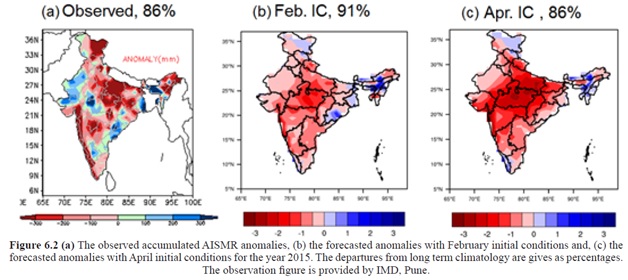Scientist Profile

Dr. Ankur Srivastava
Designation
: Scientist D
Phone
: +91-(0)20-25904457
Fax
: +91-(0)20-25865142
Email ID
: ankur[at]tropmet[dot]res[dot]in
| Degree | University | Year | Stream |
|---|---|---|---|
| Ph.D. | Indian Institute of Technology, Bombay | 2022 | Climate Studies |
| Bachelor of Technology | Uttar Pradesh Technical University | 2012 | Electronics & Instrumentation |
 Monsoons and their different modes of variability viz. synoptic, intra-seasonal and inter-annual
Monsoons and their different modes of variability viz. synoptic, intra-seasonal and inter-annual
 Monsoon teleconnections
Monsoon teleconnections
 Predictability
Predictability
 Coupled ocean-atmosphere modelling
Coupled ocean-atmosphere modelling
 Seasonal Prediction
Seasonal Prediction
| Award Name | Awarded By | Awarded For | Year |
|---|---|---|---|
| Gold Medal | SRMCEM, Lucknow | Best B.Tech. Project Award | 2012 |
| Certificate of Merit | Uttar Pradesh Technical University | Top 10 performer in the university | 2012 |
| Year | Designation | Institute |
|---|---|---|
| 2021-Present | Scientist D | Indian Institute of Tropical Meteorology, Pune |
| 2017-2020 | Scientist C | Indian Institute of Tropical Meteorology, Pune |
| 2014-2016 | Scientist B | Indian Institute of Tropical Meteorology, Pune |
| 2012-2013 | Trainee Scientist | Indian Institute of Tropical Meteorology, Pune |
Research Highlight

Research Report on 2015 Southwest Monsoon
The year, 2015 was recorded as a strong El-Niño year with SST anomalies in the Niño 3.4 region hovering around 2°C. The IITM CFSv2T382 with February Initial conditions was able to forecast a moderately strong El-Niño; however, the magnitude was slightly under-predicted. But the forecast with April ICs had a very good correspondence with the observed SST anomalies in the tropical Pacific & the Niño 3.4 index was very close to observations. The model with both the ICs had predicted neutral dipole mode conditions, and as it turns out, no significant dipolemode conditions were observed. It is interesting to note that forecasts issued by other leading international centers (e.g., NCEP of USAand ECMWF of Europe) could not predict below normal/deficient monsoon signal even with zero lead timeeven though they could simulate strong El Niño. NCEP forecast, which uses the original version of CFSv2,did not show any signal of possible below normal monsoon over India. Same was the case with European Centrefor Medium-Range Weather Forecasts (ECMWF). The success story of the forecasts issued by IITM canmainly be attributed to the high-resolution coupled model implemented at IITM, andrealistic forecast of El-Niño conditions in the tropical Pacific Ocean.


